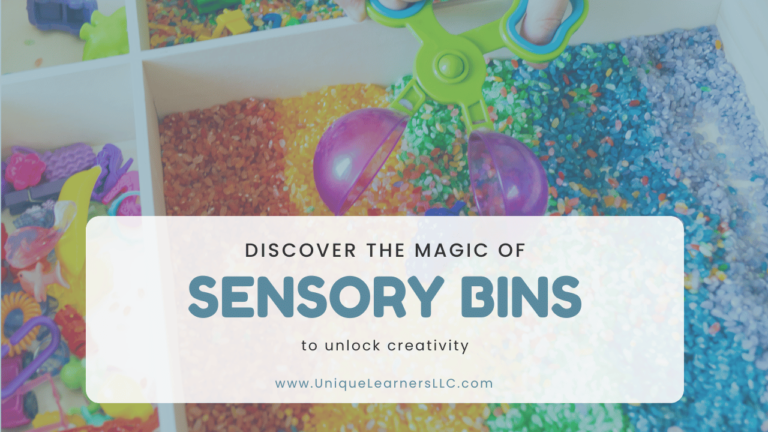Imagine a world where your child’s creativity knows no bounds, where their imagination runs wild and their senses are delighted by endless possibilities. Sounds like a dream, right? Well, this utopia is closer than you might think. Welcome to the enchanting realm of sensory bins at home, a simple yet incredibly effective tool to unlock your child’s innate creativity and cognitive development.
Sensory bins are more than just a fun activity; they are a portal to a world of discovery and learning. Picture your child’s hands sifting through vibrant-colored rice, feeling the cool texture of water beads, or building tiny castles with kinetic sand. Each touch, sight, and sound in their sensory bin not only entertains but also educates, fostering an environment where learning is synonymous with play. As parents, educators, or caregivers, we often seek ways to make education engaging, and sensory bins offer a magical solution, blending creativity with developmental milestones seamlessly. Dive into this blog post to uncover how these bins can transform mundane moments into extraordinary adventures for your little one.
Of course, at Unique Learners, we are always looking for exciting ways to practice spelling, reading, writing, and math skills – even for older students. We hope the images in this blog will help spark some ideas for bases, objects, and ways to make independent work more fun and effective for your unique learner!
Understanding the Concept of Sensory Bins
Sensory bins are a hands-on play activity that engages children in exploring and stimulating their senses. They typically consist of a container filled with various materials, such as rice, sand, water beads, or even natural elements like leaves and pinecones. The purpose of sensory bins is to provide children with a safe and controlled environment where they can freely manipulate and interact with different textures, colors, and objects.
By engaging in sensory play through these bins, children are able to enhance their cognitive development and build important skills. They learn to use their senses to observe, investigate, and make sense of the world around them. This type of play also encourages problem-solving skills, creativity, language development, fine motor skills, and social interaction.
Benefits of Sensory Play for Child Development
Sensory play has numerous benefits for a child’s overall development. It stimulates their senses and helps them make connections between different experiences. Here are some key benefits:
1. Cognitive Development: Sensory play stimulates brain development by encouraging exploration and problem-solving. It helps children develop their thinking skills as they manipulate objects within the sensory bin.
2. Language Development: Engaging in sensory play provides opportunities for children to describe what they see, feel, hear, or smell. This helps improve their vocabulary and communication skills.
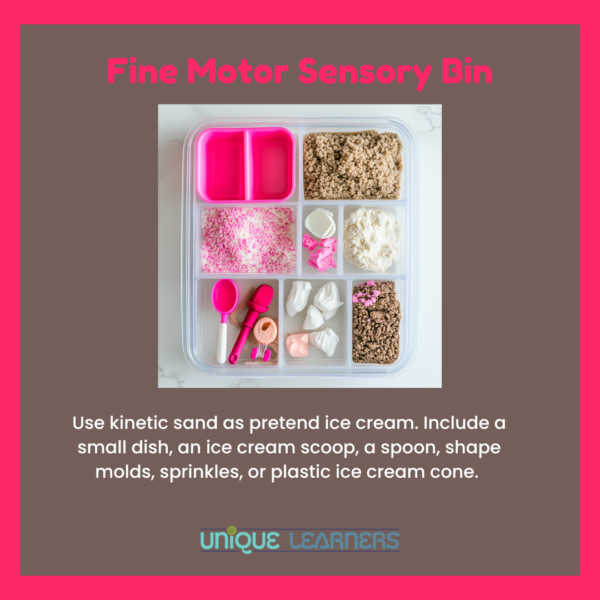
3. Fine Motor Skills: Manipulating objects within the sensory bin helps strengthen hand muscles and improves hand-eye coordination.
4. Social Interaction: Sensory bins can be enjoyed individually or in groups. When children engage in sensory play together, they learn how to share materials, take turns, negotiate roles, and cooperate with others.
5. Emotional Regulation: Sensory play can have a calming effect on children, helping them regulate their emotions and reduce stress or anxiety.
How to Set Up and Organize a Sensory Bin
Setting up a sensory bin is simple and can be done with materials readily available at home or easily found in stores. Here’s how you can create your own sensory bin:
1. Choose a Container: Select a container that is large enough to hold the materials and allows for easy exploration. It could be a plastic storage bin, a shallow tray, or even an inflatable pool.
2. Select Materials: Choose materials that are safe for children to touch, taste (if applicable), and explore. Some popular options include rice, dried beans, sand, water beads, pom-poms, or natural elements like leaves and flowers.
3. Add Tools and Toys: Enhance the sensory experience by adding tools like scoops, spoons, funnels, or small toys that complement the theme of the sensory bin.
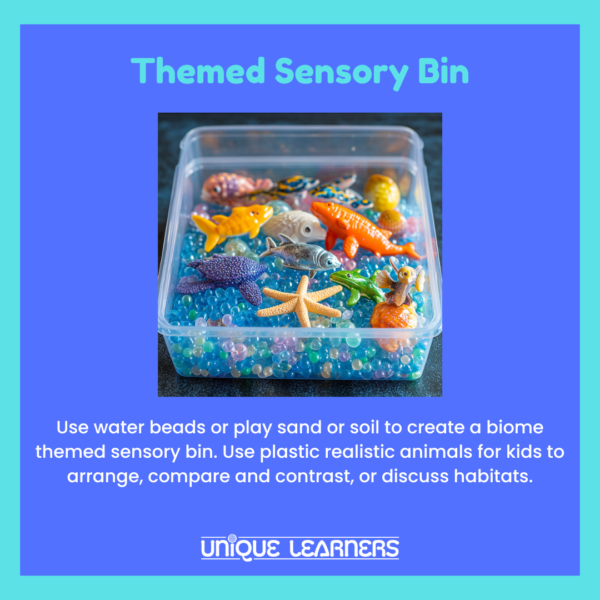
4. Create a Theme: Consider creating a theme for your sensory bin to make it more engaging for your child. For example, you could create an ocean-themed bin with blue water beads and toy sea creatures.
5. Supervise Play: Always supervise children during sensory play to ensure their safety and guide them in exploring the materials appropriately.
Choosing the Right Materials for Sensory Bins
The choice of materials for sensory bins depends on several factors such as age appropriateness, safety considerations, and the specific learning goals you have in mind. Here are some popular materials used in sensory bins:
1. Rice: Rice is a versatile material that can be dyed with food coloring to create vibrant colors. It provides a great sensory experience and is suitable for various age groups.
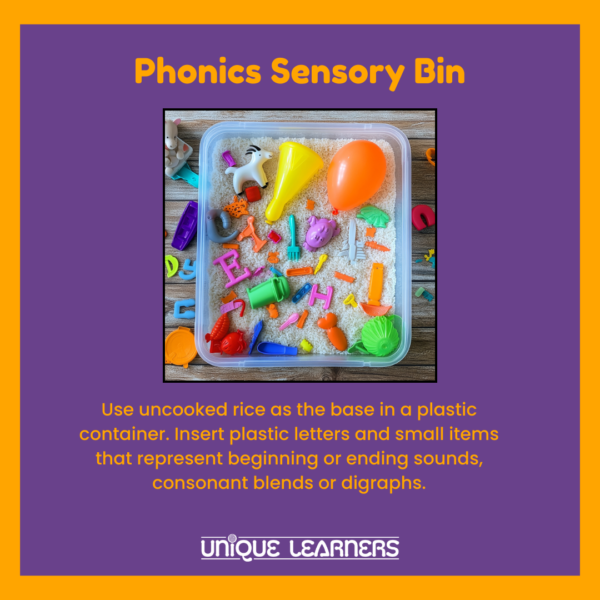
2. Water Beads: Water beads are small, colorful gel-like balls that expand when soaked in water. They have a unique texture and are visually appealing.
3. Kinetic Sand: Kinetic sand is moldable and holds its shape, making it perfect for building and sculpting. It provides a tactile experience and is easy to clean up.
4. Natural Elements: Natural elements like leaves, pinecones, or rocks can be incorporated into sensory bins to provide a connection with nature.
5. Sensory Bottles: Sensory bottles are containers filled with materials like glitter, water, or oil that create visual stimulation when shaken or turned upside down.
Creative Sensory Bin Ideas for Different Age Groups
Sensory bins can be tailored to suit the developmental needs and interests of different age groups. If you have a child who is developmentally delayed or even has learning difficulties, choose sensory bin suggestions that target younger children. Integrate the sensory materials with the academic content or cognitive skills you are focused on. Here are some creative ideas for sensory bins:
1. Exploring Textures (6-12 months): Fill a sensory bin with soft fabrics, textured balls, or different textured materials like fur or bubble wrap.
2. Color Sorting (1-2 years): Use colored pom-poms or blocks in various colors and provide sorting cups or containers of corresponding colors.
3. Construction Zone (3-4 years): Fill the bin with kinetic sand, small construction vehicles, rocks, and sticks for children to build their own construction site.
4. Ocean Adventure (5-6 years): Create an ocean-themed sensory bin with blue water beads, seashells, toy sea creatures, and a small aquarium net for pretend play.
5. Dinosaur Dig (7+ years): Bury dinosaur figurines in a bin filled with sand or dirt and provide small brushes for children to excavate the fossils.
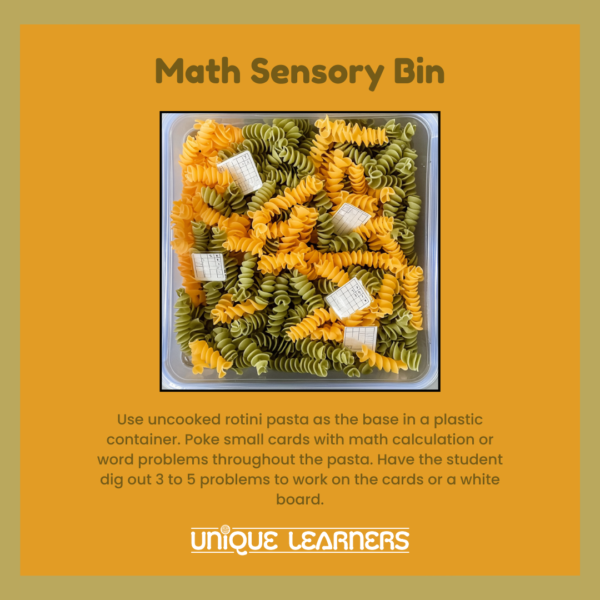
Incorporating Educational Elements into Sensory Play
Sensory play can be easily combined with educational elements to enhance learning opportunities. Here are some ways to incorporate educational elements into sensory play:
1. Counting and Sorting: Use materials like buttons, beads, or small toys to practice counting and sorting by color, shape, or size.
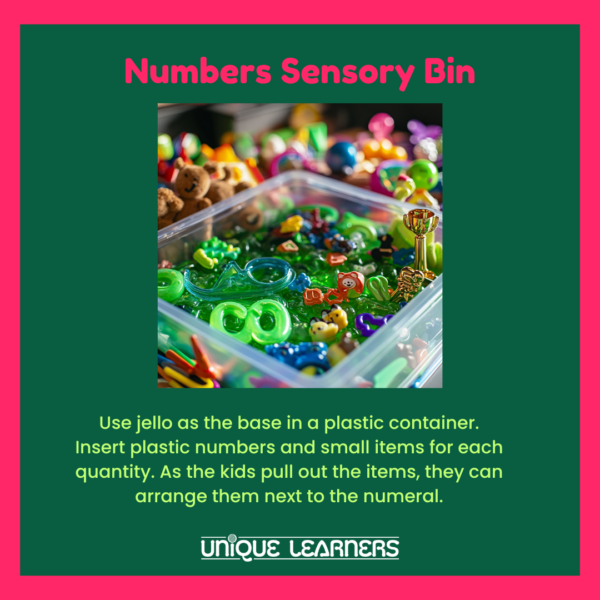
2. Letter Recognition: Hide foam letters in a sensory bin filled with rice or sand and encourage children to find specific letters or spell simple words.
3. Science Experiments: Create a sensory bin that allows children to explore scientific concepts like sinking and floating by adding objects of different densities.
4. Sensory Alphabet Hunt: Hide small objects representing each letter of the alphabet in a sensory bin and challenge children to find the corresponding letters.
Tips for Maximizing the Learning Potential of Sensory Bins
To make the most out of sensory play experiences, consider these tips:
1. Follow Your Child’s Interests: Choose materials and themes that align with your child’s interests to keep them engaged and motivated.
2. Rotate Materials Regularly: Introduce new materials or change the theme of the sensory bin periodically to keep the play experience fresh and exciting.
3. Encourage Open-Ended Play: Allow your child to explore the sensory bin freely without imposing specific rules or outcomes. This promotes creativity and imagination.
4. Use Language to Extend Learning: Engage in conversations with your child during sensory play to encourage language development and expand their vocabulary.
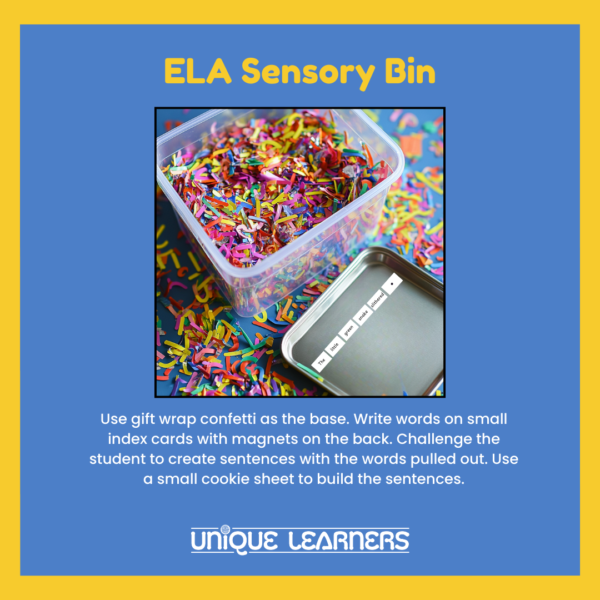
Integrating Sensory Play into Daily Routine for Long-Term Impact
Sensory play doesn’t have to be limited to a specific time or place. You can easily integrate it into your child’s daily routine for long-term impact. Here are some ideas:
1. Mealtime Sensory Exploration: Offer a variety of foods with different textures, colors, and tastes during meals to stimulate your child’s senses.
2. Sensory Bath Time: Add bath toys, foam letters, or colored water tablets to make bath time a sensory experience.
3. Nature Walks: Take your child on nature walks where they can touch leaves, smell flowers, and listen to the sounds of birds or rustling leaves.
4. Sensory Storytelling: Use props or sensory materials while reading stories aloud to make the storytelling experience more engaging and interactive.
Conclusion: Embracing the Magic of Sensory Bins for Your Child’s Creativity
Sensory bins are not just containers filled with materials; they are gateways to endless possibilities for your child’s creativity and cognitive development. By incorporating sensory play into their daily lives, you provide them with opportunities for exploration, learning, and self-expression.
The magic of sensory bins lies in their ability to engage all the senses, spark imagination, and create a safe space for your child to learn through play. So, unlock your child’s creativity and embark on this enchanting journey of sensory play. Watch as they discover new textures, experiment with different materials, and unleash their boundless imagination.
Addressing Common Concerns and FAQs about Sensory Bins
While sensory bins offer numerous benefits, it’s natural for parents to have questions or concerns. Here are some common concerns addressed:
1. Is it safe for my child to play with sensory bins?
Sensory bins can be made safe by choosing appropriate materials and supervising playtime. Avoid small objects that can be choking hazards and ensure the materials are non-toxic, especially for younger children or older kids who still have an oral fixation.
2. How often should I change the materials in the sensory bin?
You will want to change your sensory bins often enough to keep materials disinfected from frequent touching with germy hands. Changing the materials in the sensory bin every few weeks keeps the experience fresh and exciting for your child. It also allows them to explore new textures and themes.
3. Can sensory bins help with calming an overstimulated child?
Sensory play has a calming effect on many children as it helps them focus their attention on specific sensations. It can be particularly beneficial for overstimulated children.
4. Do sensory bins really help with learning?
Yes! The more ways kids can see, hear, touch, and move to get information into their brains, the more memory is stimulated and skills are practiced. Incorporate items that trigger memories of content and skills you are teaching. Using sensory bins for workbox or independent work tasks can help homeschooled kids develop independent work habits.
5. Can I make my own sensory bin materials at home?
Absolutely! Many sensory bin materials can be made at home using simple ingredients like flour, salt, or food coloring. There are plenty of DIY recipes available online.
Now that you have a deeper understanding of sensory bins and their benefits, it’s time to dive into the world of sensory play with your child. Embrace the magic and watch as their creativity blossoms!
